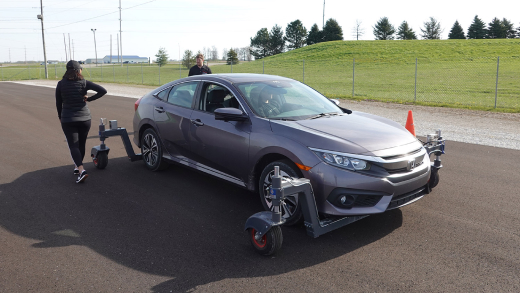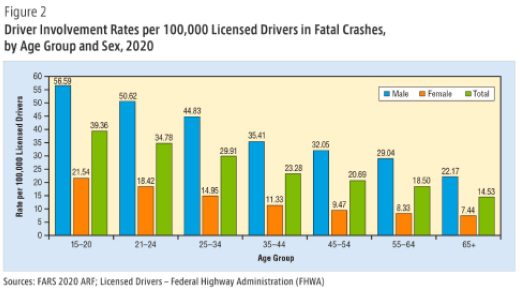Supporting Safety Driving for Young Drivers

Bryan Hourt | American Honda head of North American safety strategy and planning
The United States is a vast country with numerous states having different traffic laws and regulations, resulting in a variety of traffic environments. American Honda’s Bryan Hourt describes his planning traffic education activities.
The Challenge is to Educate Young Drivers on Safety Driving
Despite the advances in automobile safety technology, around 40,000 Americans are still killed in roadway crashes each year. About 1/3 of those fatalities involve drivers under 25 years old. Due to the higher cost of new vehicles, younger drivers are more likely to drive older, less expensive vehicles. Many older vehicles lack the latest safety technology like Automatic Emergency Braking, so if a collision occurs, there may be higher chance of serious injury. That is why we have increased our focus on driver education for young drivers, in the hope to improve the driver’s skillset as well as establish a safe-driving mindset to reduce risky behaviors such as speeding and distracted driving.
-

This CIVIC used at the Traffic Education Center is called a skid car and can replicate sliding that may occur on snowy or icy road conditions. -

Graph showing the percentage of fatal crashes by age, as published by the National Highway Traffic Safety Administration (NHTSA) of the U.S. Department of Transportation. Blue, orange, and yellow-green indicate the number of fatalities per 100,000 license holders for males, females, and males and females combined, respectively, with the highest number of fatalities in the 15-20 and 21-24 age groups.
The Numerous Collaborations to Improve Driver Safety
We have prepared automobile driver education programs available for our employees and their children at our Ohio- and Indiana-area automobile plants. We hope this effort will serve as a starting point for more programs at other Honda facilities across the United States.
However, since these are smaller regional programs, we are currently exploring ways and partners to reach more young drivers to provide safety driving education in the future. In late 2021, Honda invited non-profit organizations to propose ideas to improve driver safety. Ultimately, 27 organizations with a wide variety of initiatives aimed at young drivers, were selected. In 2022, Honda provided financial support to these organizations. For example, funding for some organizations paid for driving simulators, which allows young drivers to explore potentially dangerous situations, without actual danger, in the safety of the simulator. This also helps to improve their safety awareness. American Honda hopes to learn best practices related to these initiatives to influence our potential future driver training activities.
-

The team that organized the START (Safety Training Awareness and Responsibility for Teens) safety driving training program -

In addition to automobile and motorcycle training, American Honda offers training for ATVs (All-Terrain Vehicles) and SxSs (Side-by-Side Vehicles: 2- or 4-seater off-road vehicles). This photo shows ATV training.
Towards Honda’s 2050 Goal of Zero Traffic Accident Fatalities Involving Honda Motorcycles and Automobiles
As a long-time safety engineer, I was very excited when Mr. Mibe announced the goal of zero traffic fatalities by 2050. It aligns well with the “Safety for Everyone” vision that has inspired our work since 2003, with a focus on all road users, including pedestrians. While it may seem like a difficult target to achieve, it gives our entire global team a clear goal to pursue in the future, and encourages more safety collaboration between Honda organizations globally.
Honda’s 2050 goal also parallels targets set by international organizations such as the World Health Organization (WHO). It is important to cooperate and collaborate with these organizations because Honda cannot tackle this challenge alone. These ambitious targets will also require commitment and action from the entire transportation industry including manufacturers, and federal and local government agencies. However, we cannot wait until 2050. We have already started working in these collaborative areas. Our driver education initiatives that we are preparing now, can have an immediate positive influence on new driver behavior and hopefully make them safer drivers for life.

American HondaBryan Hourt
He joined Honda in January 1996, beginning his career as a safety test engineer, focusing on vehicle collision testing.
In 2017, he became the head of North American safety strategy and planning.